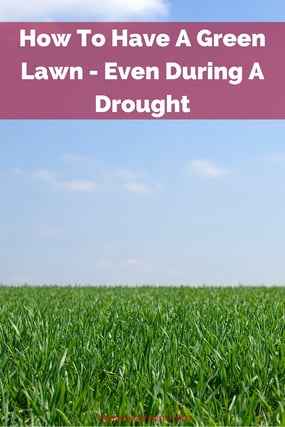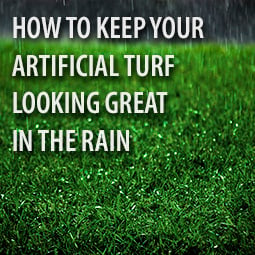 Maintaining a green lawn is difficult when a drought hits. Communities that are hardest hit by drought conditions often enact legislation prohibiting the use of water for unnecessary purposes. This includes washing cars, filling swimming pools and watering lawns. Without regular watering, lawns will eventually turn brown and the grass will die, leaving large bare spots of hard-packed soil. There are ways to keep your lawn looking green and vibrant in spite of the watering ban.
Maintaining a green lawn is difficult when a drought hits. Communities that are hardest hit by drought conditions often enact legislation prohibiting the use of water for unnecessary purposes. This includes washing cars, filling swimming pools and watering lawns. Without regular watering, lawns will eventually turn brown and the grass will die, leaving large bare spots of hard-packed soil. There are ways to keep your lawn looking green and vibrant in spite of the watering ban.
Paint It Green
Many landscaping companies are offering lawn painting services to help homeowners keep their lawns looking as close to real as possible. The paint they use is safe for both children and pets. The color will last for anywhere from two to three months depending on how it is mixed and applied. It is colorfast and will not bleed onto clothing or leach into the groundwater. Lawn paint can also be purchased by homeowners and applied as a do-it-yourself project. While some ecologists warn against using lawn paint to keep your yard green, most landscapers consider it safe if applied according to the package directions.
Choose Drought Resistant Foliage and Grass
If you have a small lawn, you can always choose to use drought resistant ground covers and grass. Many types of ground covers have small, fragrant blooms in addition to the thick, green foliage that grows close to the soil. Talk to a lawn professional at a local nursery to find out what types of grass grow well in your area. They can tell you what varieties will work in the driest of climates and the type of soil you have in your yard. Drought resistant plants and grasses are hardy enough to withstand even the most severe conditions.
Add Landscaped Areas
If you have a large yard, landscaping the entire area may be difficult and extremely expensive. A smaller yard, however, can be divided up into even smaller sections, replacing the natural grass with landscaping materials like wood chips, pea gravel, stone, sand or whatever you choose. You can add as much green as you want by including dense bushes, flowering plants, decorative grasses, cacti and miniature trees. If the size of the grass area of the lawn is reduced enough, you may be able to water it occasionally without fear of violating your community's water restriction laws.
Install Artificial Turf
One of the fastest ways to maintain a green lawn is to replace your natural grass lawn with artificial turf. Most homeowners have other reasons for opting to install artificial grass. Considered to be a major investment, the lawn will actually pay for itself over time. Once the lawn has been installed, there will be no more costs associated with upkeep. Lawnmowers and trimmers will not have to be used, so the cost of their upkeep will be dramatically reduced. The cost of watering the lawn will also be eliminated. Most importantly, no more time will be spent performing the tedious tasks associated with maintaining a large lawn.
Homeowner's Associations often have strict guidelines pertaining to how lawn's must be kept. They must be uniformly cut to a specific height, fertilized to maintain a constant, even color and all debris and yard waste must be promptly picked up and removed. Part of keeping the lawn looking pristine is regular watering. When drought conditions begin to appear, watering restrictions prevent homeowner's from watering their properties. In the past, many of these measures were frowned upon by HOA's, but now most are becoming acceptable in an attempt to keep the area homes looking beautiful and well cared for. By talking to a local landscaping professional, there are many ways to keep your lawn looking green and vibrant.











